Anja Murray: So many reasons to create a wildlife pond
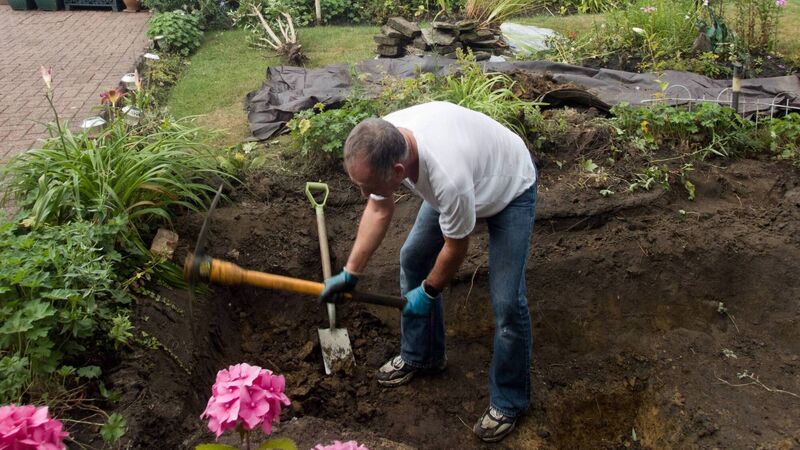
Anja Murray: "Creating a pond is one of the most effective ways to combat declining diversity across Irish landscapes. Ponds and wetlands have been rapidly disappearing in recent decades despite an abundance of lakes and small water bodies. One academic study estimates that 90% of all wetlands across Ireland are now gone. Pond creation is a creative, rewarding and surprisingly effective way to make space for aquatic ecosystems that have been made so unwelcome across their former range."
I recently visited County Roscommon farmer, Tommy Earley, who seems to be hooked on ponds. The first pond he dug a decade ago was soon surrounded by bulrushes and decorated with water lilies, adorned with emerald- and crimson-coloured dragonflies, and from the very first spring, alive with frogs and frogspawn.
Frogs famously follow the same age-old routes to familiar spawning pools, generation after generation. Yet it never takes long for frogs to discover the sanctuary of a new pond. Those that populate Tommy Early’s ponds would not have had far to travel, bordered as the site is by the shores of Lough Allen and a wet bog full of natural pools.
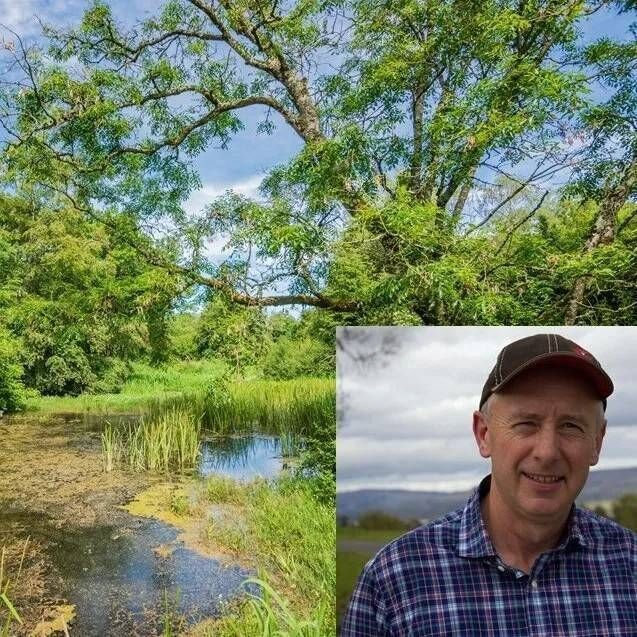
Not content to settle for just one pond, there are now 20 ponds of varying sizes across the farm. Tommy is effusive about the life that has found its way in. Newts spend their breeding season in the water, where each spring, polka-dotted males dance to impress potential partners, before enamoured pairs engage in elaborate courtship dances. Herons and otters have all followed, no doubt delighted with the newfound abundance. Bats also benefit from the addition of a new pond in the neighbourhood, on account of both increased food resources and access to drinking water.
Creating a pond is one of the most effective ways to combat declining diversity across Irish landscapes. Ponds and wetlands have been rapidly disappearing in recent decades despite an abundance of lakes and small water bodies. One academic study estimates that 90% of all wetlands across Ireland are now gone. Pond creation is a creative, rewarding and surprisingly effective way to make space for aquatic ecosystems that have been made so unwelcome across their former range.
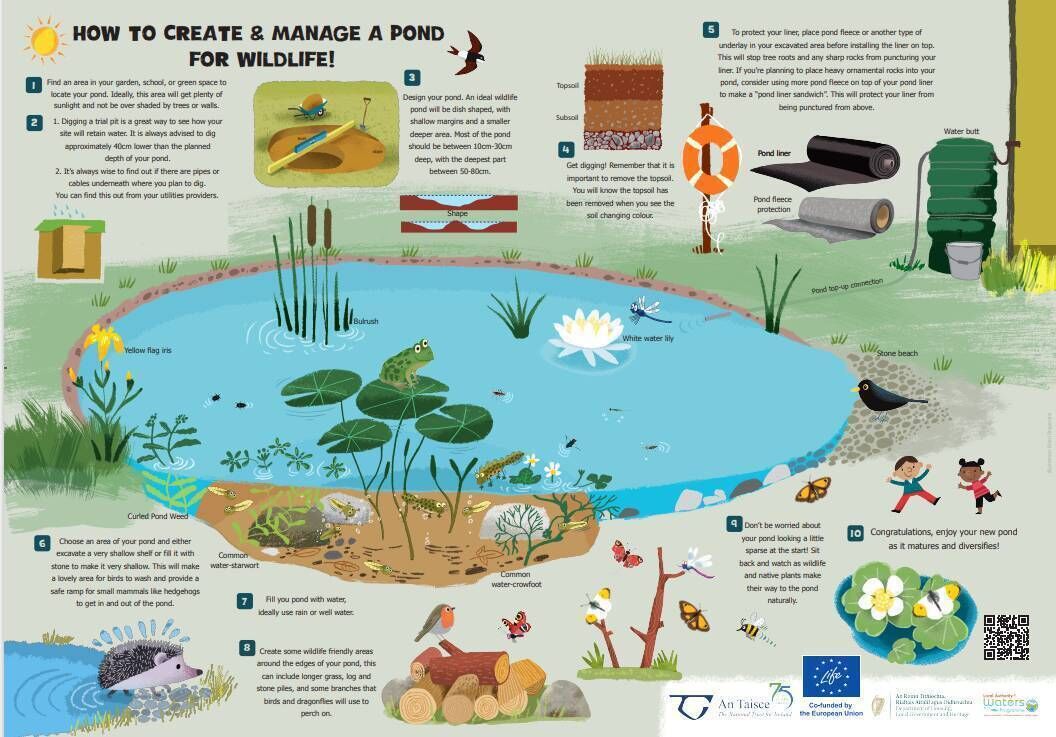
New ponds rarely take long to host pond skaters, water boatmen, damselflies, whirligig beetles, mayflies, stoneflies and moths. Swifts, swallows and house martins thrive on the abundance of flying insects. Each summer, they swoop overhead snatching winged invertebrates from the air, harvesting the protein their nestlings need before making their epic migrations south for winter.
All but the most stony-hearted of humans will relish in the antics of these wild creatures. Damselflies and dragonflies are especially enchanting. Watching the newly moulted dragonflies as they clamber out of the water, having lived life so far as a predatory nymph among the benthic muds, is a special treat. At first their delicate bodies are almost translucent slivery grey, before the wings unfold and the shimmering pigments come through.
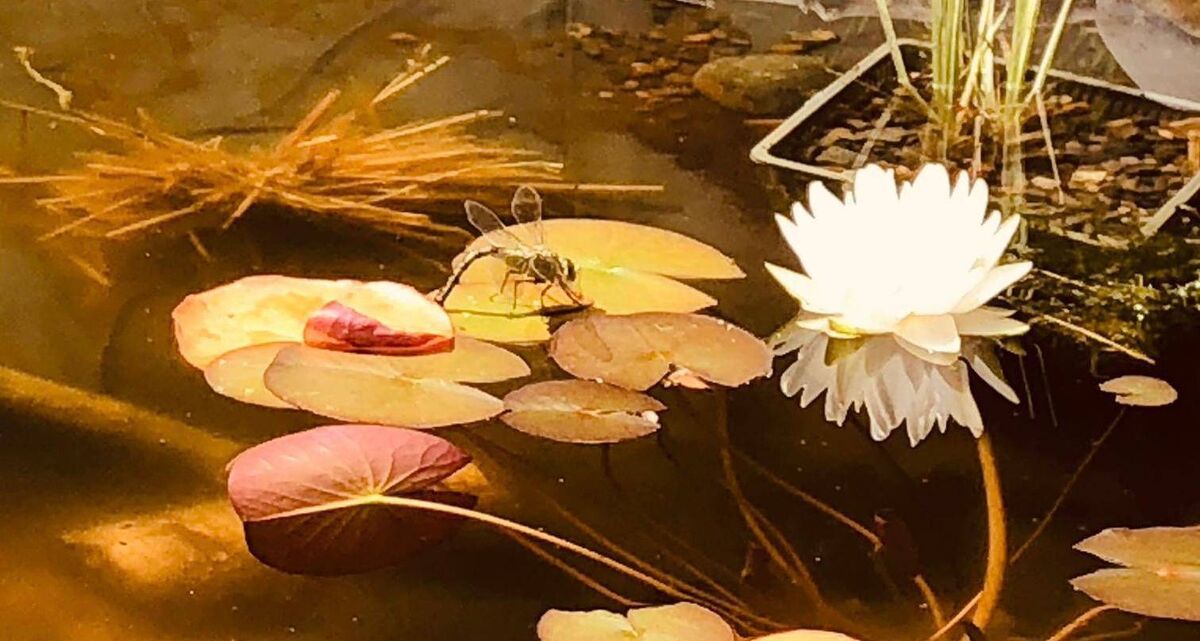
Rather than buying in pond plants, the expert advice is to wait and see what arrives without any intervention. Yellow water-lilies like the more open water in the middle, while native pondweeds — bogbean and water mint — gather around the edges. Even in a garden where there’s no obvious route for pond life to find its way in, life will find a way. Charles Darwin was a pond enthusiast and researched how so many aquatic plants and animals could make their way in of their own accord. He figured out that both plant seeds and small pond creatures are readily transported on the feet of ducks and other water birds.
One thing to watch out for, whether in a new or an already established pond, is invasive species. Buying exotic pond plants from garden centres will likely lead to trouble... curly waterweed from southern Africa is a major problem for native trout in Lough Corrib.
Other problematic species include Canadian waterweed and water fern — both originally introduced from North America as ornamental plants for garden ponds, though now known to destroy the biodiversity value of ponds by producing dense mats that block light and make the pond inhospitable to most native species.
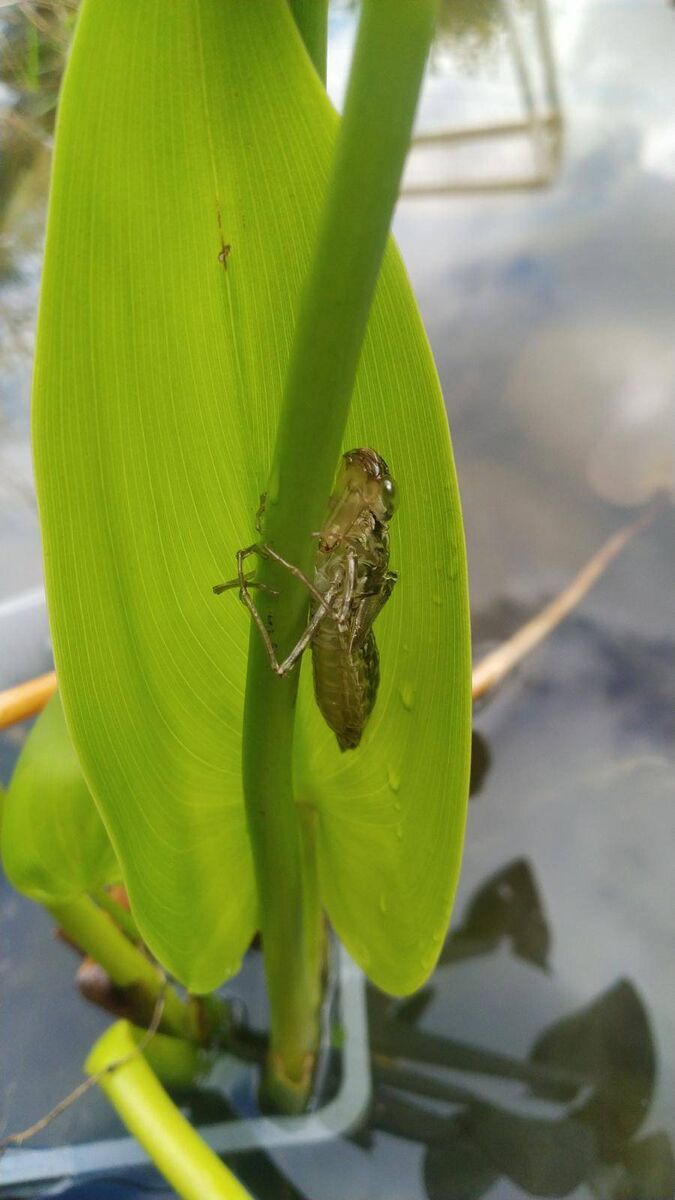
In addition to ponds' biodiversity value, they also absorb atmospheric carbon. Permanent ponds with natural vegetation are excellent at carbon sequestration, especially in the sediments that accumulate over time. Scientific studies have shown that small ponds can sequester 20-30 times the amount of carbon compared with woodland and grassland habitats.
So whether it’s in your own garden or farm or on a piece of land that the community has access to, creating a pond is a wonderful thing to do. Unless it’s a very small pond, a skilled digger operator (ideally one who has done a few ponds before) will be required. Alternatively, take a traditional approach to tackling substantial jobs in the land — a meitheal! Invite neighbours, friends, and family in to help with the digging. Who knows, it might even inspire others to do the same.
Lots of helpful guidance is available... and funding opportunities too.
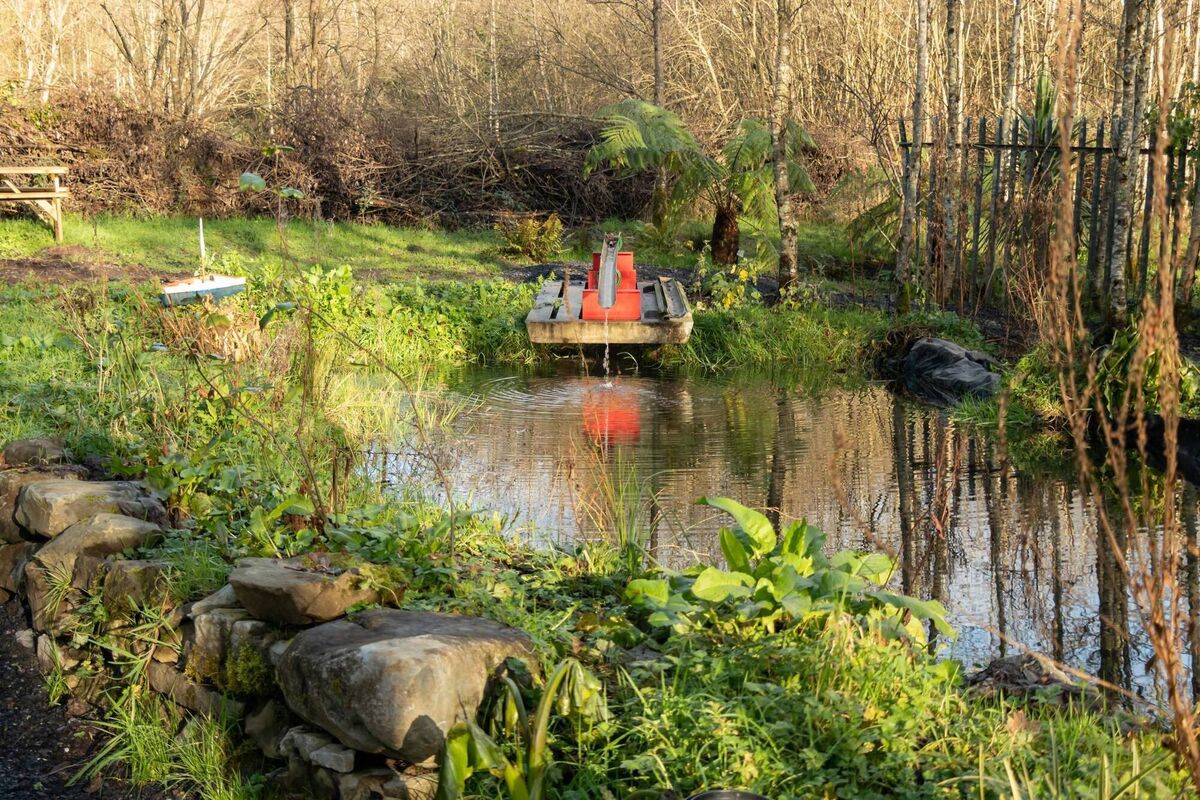
The Hare’s Corner initiative run by the Burren Beo Trust helps landowners make more space for nature. Pond creation is one of the actions supported through this scheme. Their team will help with site specific guidance as well as micro-finance to help with receipted costs. While applications are closed for 2024, now is a good time to get planning where and how to go about creating a pond and find out about various options and approaches.
Pond creation has also been a major part of the BRIDE biodiversity regeneration project in north-east County Cork and west Waterford. Project manager, Donal Sheehan, describes how, of all the different things that participating farmers did, putting in a pond was by far the favourite. Apart from the biodiversity gains, Donal insists that the ‘therapy’ from having a plot of water to visit was part of the success of this measure.
If you are considering any of this, have a listen to Tommy Earley explain why every farmer and gardener in Ireland should create a watery space for nature on Farming for Nature / Why Every Farmer Should Dig a Pond! (audioboom.com). When so much of what we are hearing about nature is about species loss and lack of action, doing something that will deliver benefits long in to the future can be a deeply rewarding route to take.







